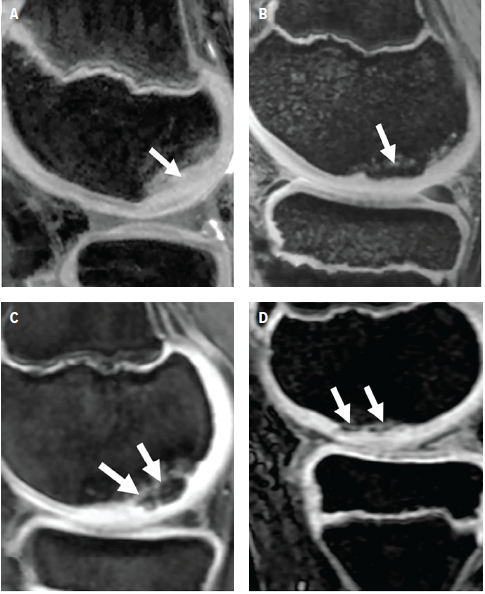ROCK Group Finds Unreliable MRI Interpretations for Osteochondritis of the Knee
Published July 2020 | American Journal of Sports Medicine
In too many ways, assessing MRI scans to determine the prognosis of children with osteochondritis (OCD) lesions in their knees depends too much upon the eye of the beholder.
Cincinnati Children’s imaging and orthopaedic surgery experts Andrew Zbojniewicz and Eric Wall, MD were among several co-leading authors for an interrater study conducted by the Research in Osteochondritis of the Knee (ROCK) Study Group.
The team explored how 10 fellowship-trained orthopaedic surgeons evaluated 42 sets of MRI scans of children with OCD lesion across 31 characteristics, such as lesion size, cartilage status, and various bone features.
“Raters were reliable when the lesion was measured in the coronal plane,” the team reported. “Almost perfect agreement was achieved for condylar size, substantial agreement for physeal patency, and moderate agreement for joint effusion and cartilage status.”
However, reliability was “moderate at best” for other factors such as interface characteristics and progeny bone-parent bone qualities. Co-authors suggest that future developments in artificial intelligence and image scanning software may help improve the reliability of MRI data.
“Many MRI features of OCD that inform treatment decisions were unreliable,” the team concluded. “Further work will be needed to refine the unreliable characteristics and to assess the ability of those reliable characteristics to predict clinical lesion instability and prognosis.”
Progeny Bone Characteristics
These panels illustrate progeny bone characteristics. The study found that MRI scan readers were not as consistent at evaluating these types of images compared to others, such as assessing condylar size. These sagittal images show varying degrees of mineralization within the bed of the osteochondritis dissecans site: (A) no mineralization (arrow), (B) a single discrete geographic fragment (arrow), (C) multiple distinct geographic fragments (arrows), and (D) linear mineralization (arrows).






